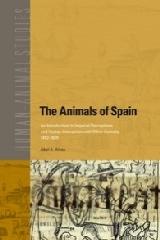Writings from 1492 to 1826 reveal that the history of animals in the Spanish empire transcended the bullfight. The early modern Spanish empire was shaped by its animal actors, and authors from Cervantes to the local officials who wrote the relaciones geográficas were aware of this. Nonhuman animals provided food, clothing, labor, entertainment and companionship. Functioning as allegories of human behavior, nonhuman animals were perceived by Spanish and Amerindian authors alike as bearing some relationship to humans. On occasion, they even were appreciated as unique and fascinating beings. Through empirical observation and metaphor, some in the Spanish empire saw themselves as related in some way to other animals, recognizing, before Darwin, a "difference in degree rather than kind."

(0 Comentarios)